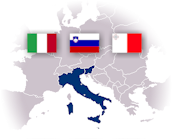Synonyms: CTRL ODN 2; Negative Control for inhibitory ODNs (iODNs) and CpG ODNs (TLR9 agonists)


Reactivity
Human, Mouse, Rat
Specificity
Human, Mouse, Rat
MW
7.324g/mol
Shipment
AMBIENT
Short Term Storage
+4°C
Long Term Storage
+4°C
Shelf Life
Stable for at least 2 years after receipt when stored at +4°C.
Description
Chemical. MW: 7.324g/mol. Unmethylated CG dinucleotides within particular sequence contexts are responsible for the immunostimulatory activity of bacterial DNA. Synthetic oligonucleotides (ODN) that contain such CpG motifs (CpG ODNs) mimic microbial DNA. The innate immune system of vertebrates has the ability to recognize CpG motifs in microbial DNA via the Toll-like receptor (TLR) 9 if the CpG ODN were free of additional immune stimulatory contaminants often present in synthetic commercial CpG ODN preparations designed for molecular biology applications (i.e. PCR). Given that high quality CpG ODNs were used [i.e. endotoxin-free], a close link has been established between the expression of TLR9 on certain immune cell subsets and the modulation of the immune system by CpG DNA. Different types of CpG ODNs were identified based on their differing biological effects on different cell types: ODN Type A is a potent inducer of IFN-alpha in human PDC, (i.e. ODN 1585 or 2216) leading to antigen presenting cell (APC) maturation, whereas ODN Type B (i.e. ODN 2006 or ODN 1668 / ODN 1826) is a weak inducer of IFN-alpha but rather stimulates IL-8 production and increasing costimulatory and Ag-presenting molecules and triggers proliferation of B-cells and IgM and IL-6 production. A third type of CpG ODN has been identified, termed ODN Type C, with both high induction of INF-alpha in PDC and activation of B-cells. The sequence of CpG Type C (also called K) (i.e. ODN 2395 or M362) combines elements of both Type A and Type B and contain a central palindromic sequence with CG dinucleotides, a characteristic feature of Type A, and a ‘TCGTCG’ motif at the 5’ end, present in Type B CpG ODNs. Although the CpG motifs are thought to differ between mice and humans, in both species the recognition of CpG ODNs is mediated by TLR9. The optimal CpG motif in humans is GTCGTT and GACGTT for the murine sequence. However, recent evidence suggests that this sequence specificity is restricted to phosphorothioate (PS)-modified ODN and is not observed when a natural phosphodiester backbone is used. In recent years sequence requirements, specificity, signalling pathways and kinetics of the TLR9 suppression by ‘inhibitory ODNs’ (iODNs) have been investigated.
ESCLUSIVAMENTE PER USO DI RICERCA (RUO) e non per uso terapeutico o diagnostico su uomini o animali. Il prodotto NON è un Dispositivo Medico o un Diagnostico in Vitro.
PRODUCT FOR RESEARCH USE ONLY (RUO) and not for therapeutic or diagnostic use on humans or animals. The product is NOT a Medical Device or an In-Vitro Diagnostic (IVD).



